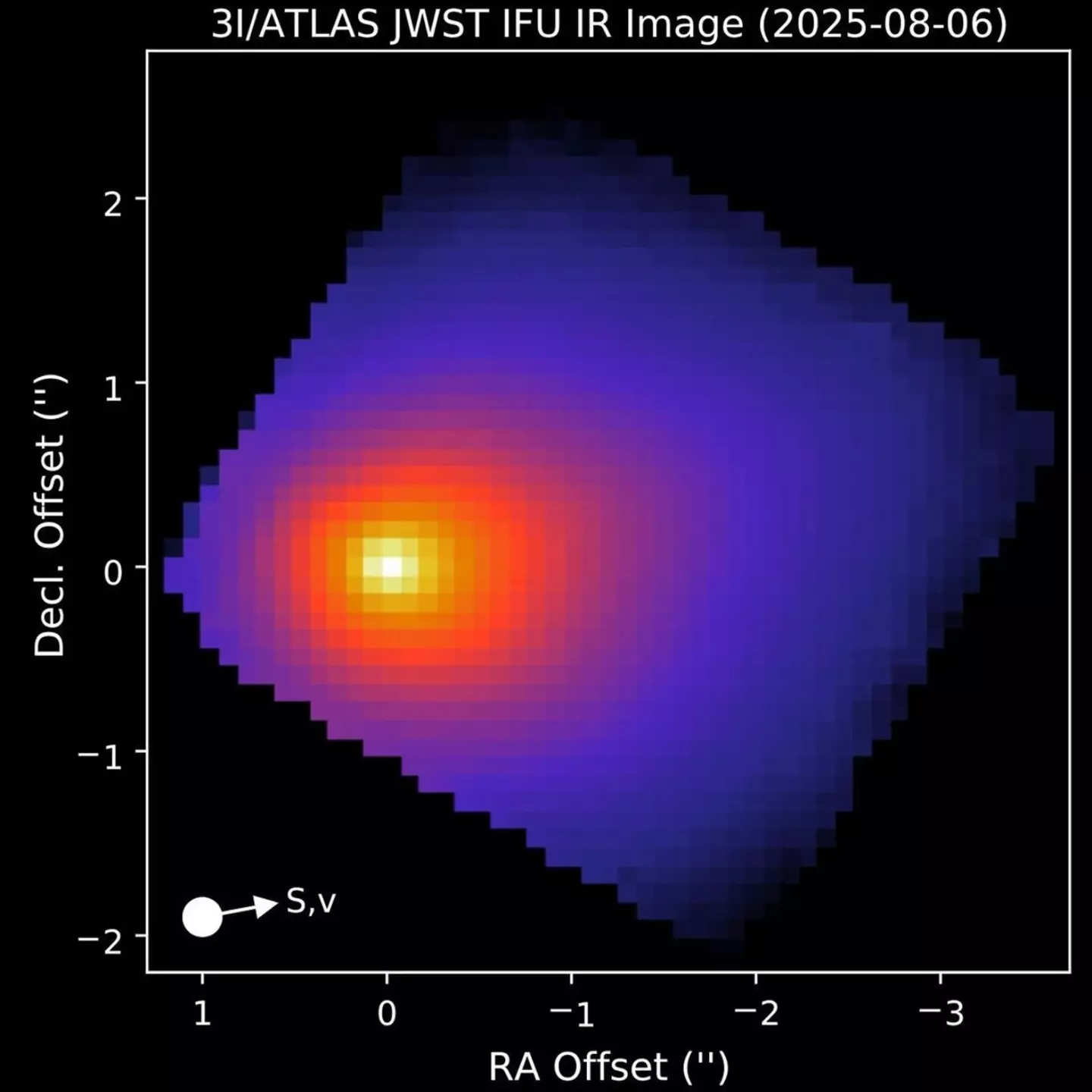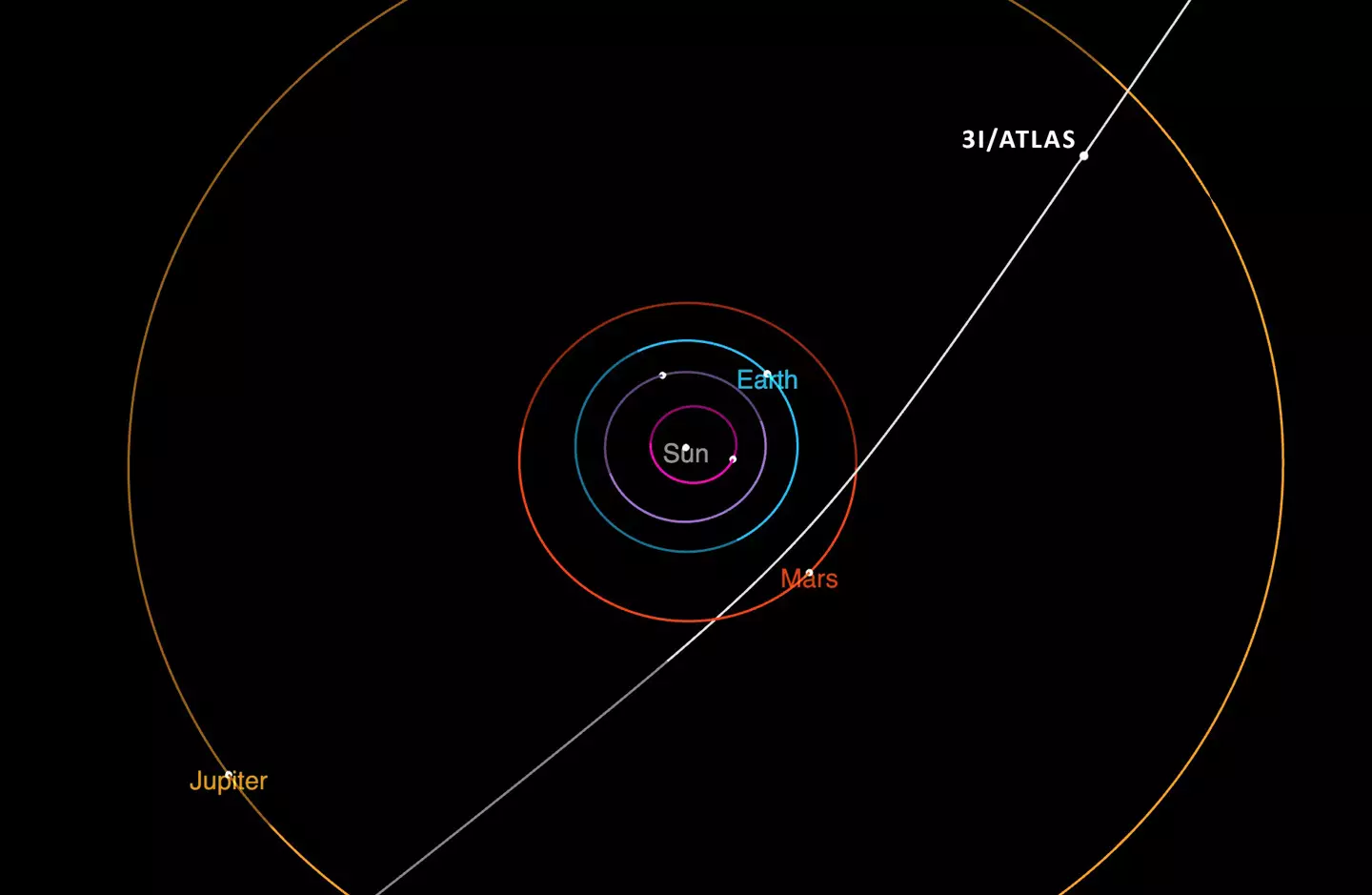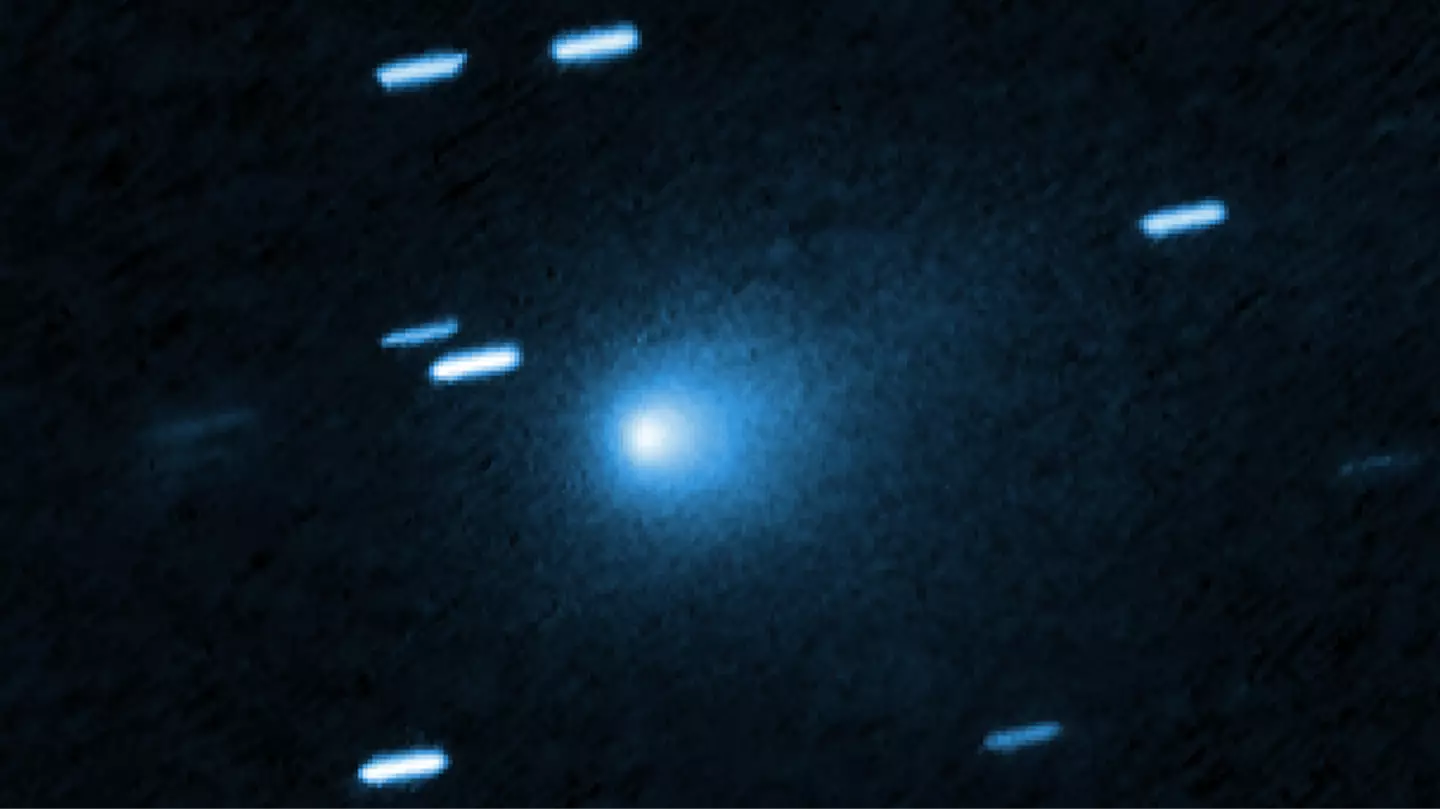A Harvard researcher has raised concerns about an object the size of Manhattan moving through our solar system, emitting a metallic vapor with an unexpected composition.
Since the discovery of interstellar object 3I/ATLAS in July, scientists worldwide have been speculating about its nature as it travels through the Solar System.
One of the more outlandish theories suggests that the 21 km object might be a product of “alien technology,” potentially indicating the presence of extraterrestrial life.
On Wednesday, October 15, new images of the object were released. Earlier images of 3I/ATLAS had already highlighted some of its unusual features.
The latest images, taken by the Keck II telescope in Hawaii in August, reveal that the object is releasing a metal alloy not previously observed in nature, as reported by the New York Post.

In a newly-published study titled Spatial Profiles of 3I/ATLAS CN and Ni Outgassing from Keck/KCWI Integral Field Spectroscopy, researchers from the Keck Observatory examined the images, identifying the metal alloy as a combination of nickel and chromium.
This results in an alloy known as nickel tetracarbonyl.
The researchers note that this combination is typically used in high-temperature industrial alloys, making it rare outside of intricate industrial processes.
It is also completely unknown in naturally occurring space objects, according to the International Business Times.
In a fresh interview with the New York Post, Dr. Avi Loeb, a Harvard astrophysicist and director at the Centre for Astrophysics, commented that 3I/ATLAS’s spectral signature “does not match any natural asteroid or comet” he has documented.
“If this alloy was manufactured, it would point to an artificial origin — potentially a probe or fragment of alien technology.”
While the study suggests that this nickel-producing anomaly is natural despite its oddity, Loeb disagrees, maintaining that it’s not a ‘natural’ space object.

“This was a process that we can imagine only because it was used in industry,” he stated, also noting, “Never seen in comets before.”
He also highlighted the absence of a cometary tail from the object, stating: “We usually see beautiful tails extending from the object away from the Sun, and in this case, there was no evidence for such a tail.”
In an interview with The Guardian, Dr. Laura Benton of the European Southern Observatory mentioned that while no one is definitively claiming the interstellar object is “alien hardware,” the data challenges our understanding of what’s naturally possible in the interstellar medium.
NASA has dismissed any speculation that 3I/ATLAS might pose a threat.
In an official statement, the space agency asserted there was “no credible evidence” to suggest an “artificial origin” for the interstellar object, which has been categorized due to the hyperbolic nature of its orbital path.
The object is expected to continue its journey through the Solar System before leaving in 2026.
Astronomy enthusiasts globally are eagerly anticipating the release of images of 3I/ATLAS.
These images, captured by the Mars Reconnaissance Orbiter’s HiRISE camera, were taken between October 4 and October 7.

